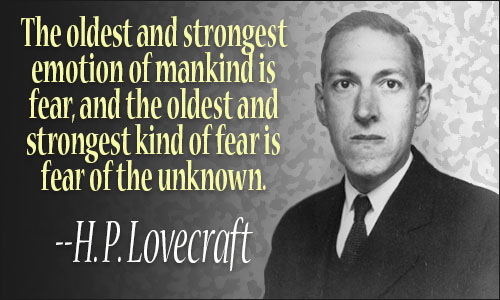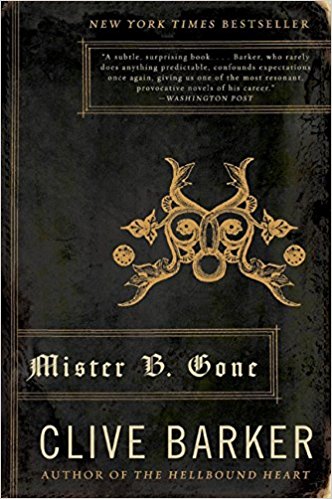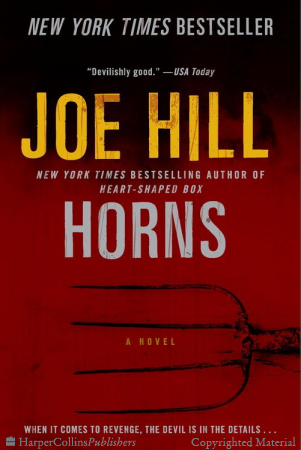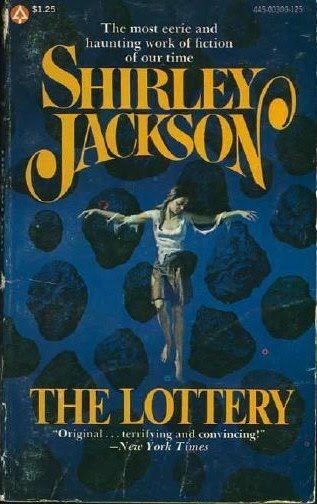
Nearly a decade ago, February received the crown for the Women in Horror Month. For those unfamiliar with this celebration, the month provides a worthy spotlight. The concept is to bring attention to females who contribute to the horror genre. The reason why this is important, is because the genre remains male dominated. Furthermore, it spawns remarks such as the Jason Blum excuse. In 2018, Blum explained he’s trying to make a horror film directed by a woman. Although his intent seemed well, he excused, “But there aren’t a lot of female directors.” Despite his ignorance, which he apologized for, the genre provides many female contributors. This includes, but is not limited to, directresses, actresses, artists, and authors.
To honor the Woman in Horror Month, I have decided to feature one of my favorite indie authors. Two Octobers ago, I had the pleasure of meeting author, Kindra Sowder. Upon introduction, her creative prolificacy and horror genre knowledge interested me. Though she has penned many books, I chose the first two novellas from her Miss Hyde series to read. From there, I was hooked.
For those unfamiliar with the Miss Hyde series, these books are not for young adults, or the faint of heart. Sowder utilizes a formula that proves the horror genre isn’t just a man’s world. With her scenes and descriptions, she doesn’t shy away from gratuitous sex or splatterpunk. Needless to say, she knows how to grab readers by the balls. While her work is unapologetic, Sowder weaves a black widow’s web of suspense and mystery.

“Hello, My Name is…” introduces the narrator, Blythe McAlister. Awakening from a one night stand in her penthouse apartment, she briefs the reader on her past. This explains how the death of her parents granted her a generous trust fund when she was seventeen. Beyond inherited wealth, she is a well renowned art consultant at the Agora Gallery. With a stage set to show she is a successful business woman, the backstory pauses. Approached by her lover of the night, she and he go for a second round. However, little does he know this is the last orgasm he will ever experience. To foreshadow, Blythe notes at chapter one’s conclusion, “Hello, my name is Blythe McAlister, and I’m a killer with a secret. Remember the story of Doctor Jekyll and Mister Hyde? Well, they only got the story half right.”
The following day, Blythe arrives at work where Hannah, her manager, greets her with a hug. Here, Blythe discovers her name alone has gained them a new artist. Upon them interacting, one sees Blythe hates the human touch. Although this counteracts her promiscuity, one learns she hates a caring human touch. This includes hugs and cuddling.
Later that night, Blythe and her co-worker/friend, Lauryn go to a bar. While Blythe enjoys a whiskey sour, she meets Dax, who she brings home for a potential one-night stand. Although something in Dax stirs romance within Blythe, her Hyde personality emerges. Surrounding Dax’s mutilation, more character development and backstory emerge. This includes Blythe’s parents educating her about her Jekyll and Hyde past. Also, one learns what Blythe does to try and keep Hyde at bay, which includes cannibalism.
The next day, Blythe is running late to work when Lauryn calls. Though expecting a lecture for running late, Lauryn explains a new artist wishes to utilize their gallery. Due to Blythe’s tardiness, the artist has waited all morning for an answer on if they will accept her. Though Lauryn can make the same decisions as Blythe, this artist’s work is grotesque. Being that this isn’t Lauryn’s style, she recommends the artist to Blythe. When Blythe walks into the gallery, what she sees within the painting is jaw dropping.
“Hello, My Name Is…” is a great series introduction. It mixes genres, introduces likable characters, and provides cliffhangers that pique one’s interest enough to progress. Among her many talents, Sowder effortlessly modernizes classic literature into today’s standards. Most important, she doesn’t piggyback on the efforts laid by previous literary icons. In the past, I have read books that are a modernized continuation of classic literature. Sadly, most of them have not been worth writing about. Overall, they feel like the author takes the easy street to bank in on an established fandom. However, for Sowder, this isn’t the case. Rather than taking easy street, she stalks the high road to reinvent a timeless subject.
Compared to “The Strange Case of Dr. Jekyll and Mr. Hyde,” this work addresses new topics. Although, it presents fresh commentary, it does resurrect original subjects. The main theme of the Stevenson classic shows inner duality between good versus evil. Another theme translates how one composes themselves differently in public rather than private. Both subjects receive attention in “Hello, My Name is…”
Contemporary themes regard the liberated, successful female. This positive viewpoint depicts a woman who can love herself, make herself happy, and self-provide. This success isn’t glorified by Blythe’s inheritance, as that was a gift bestowed to her. Rather its glorification details Blythe’s adult life, such as her ability to establish herself as a sought-after name in the arts community. A community which is cut throat to start with. As one may expect, her work success is a stepping stone into her liberation. Another element that builds her as a liberated individual is her sexual appetite. Due to her dominance in the bedroom, when Hyde isn’t in control, shows she can have no strings attached sex.
In a polar opposite aspect, there is a darker sense of liberation due to Hyde’s existence. This angle provides a similar philosophy to a Marquis de Sade work. The tone indicates one must satisfy their macabre desires, regardless of the repercussions. What I find interesting is that for the most part, Blythe has surrendered to her dark half. Granted she does partake in cannibalism to subdue Hyde’s urges. Also, she wishes the men she murders could be incoherent during the act, whereas Hyde wishes their victims to be alert during the slaughter. This preference shows compassion on Blythe’s behalf. Nonetheless, it seems she has accepted the inevitable of her darker needs. This speaks volumes on Blythe as it urges she has accepted herself, flaws included.

“Pain Killer” begins after the events of its predecessor. In this volume, Blythe’s condition receives more insight. Whereas in “The Strange Case of Dr. Jekyll and Mr. Hyde,” an elixir caused transformation, Blythe’s condition is hereditary. After revealing this information, Blythe visits a bar where she meets Kyle. Due to an unexpected turn of events, Blythe falls victim to a potential rape. However, little does her assailant know what he has bargained for.
As Blythe survives Kyle’s attempt, her life progresses uninterrupted. The next day, she meets Kyra. This is the artist who created the disturbing painting featured in volume one. Yet, rather than meeting in public, she conducts business at Kyra’s apartment. Upon introduction, Kyra hugs Blythe and welcomes her inside. Once behind closed doors, Kyra attacks without explanation. After fighting, the reason for their brawl, and Kyra’s work, presents more questions than answers. This turning point reveals that Kyra is now establishing a role in Blythe’s life. May that role be for manipulation, homicidal tutoring, blackmail, or healing Blythe.
After they part ways, night falls and Blythe dreams she is having a three way with Kyle and Dax. Yet, this dream is anything but pleasant. In this detailed vision, she is having graphic sex with their animated corpses. The presented imagery is reminiscent of serial killer illustrations by Joe Coleman. While this volume ends without as huge of a cliffhanger, there are enough loose ends to keep one reading.
As the topics of “Hello, My Name is…” bleed over into this volume, new subjects arise. The most important subject urges that no matter how strong an individual is, no one is invincible. Supporting this statement are the events that happen to Blythe from beginning to end. In volume one, Blythe and Hyde appear as an untouchable duo who are never injured. “Pain Killer” is a game changer as Blythe undergoes attack multiple times. Granted, Hyde does save the day regarding Blythe’s attempted date rape. Because of these incidents, they suggest Blythe and Hyde aren’t an unstoppable force.
Increasing the psychological aspects of the series, multiple topics enter scene. One is the necromantic dream sequence. As Blythe finds this horror desirable, I am uncertain on the dream’s psychological aspect. Is Hyde mentally torturing her? Is Hyde trying to seduce Blythe into abandoning all virtues? Is Blythe’s guilt beginning to manifest and she’s struggling with how to cope? Or, since “Pain Killer” presents more fantastic elements, are these ghosts?
Another subject deserving of attention is the fact that Blythe’s condition is hereditary. Although the subject is briefly mentioned, this sets the stage for genetic imbalance. Yet, rather than an inherited trait of depression, anxiety, or anger, it’s homicidal tendencies. Due to Blyth never asking for this flaw in her DNA, it makes her more righteous that Dr. Jekyll ever was. Reason being is because Dr. Jekyll’s actions were deliberate, Blythe’s actions are forced. Still, Blythe says at the beginning of volume one that Stevenson’s classic was only half right. So, until one knows the exact root of what birthed her dark half, blaming an ancestor for deliberate actions is meaningless.
Because of the issues addressed in my summary, “Pain Killer” spawns more questions than answers. Although this is so, one doesn’t feel these questions will remain unanswered. Considering Sowder is currently writing volume six, I am confident each future book will fill in the blanks.
If one prefers a sarcastic, suspenseful, erotic, splatterpunk series, these books are ideal. Beyond their ability to entertain, another plus side is one can read each book within a sitting. All titles are available in print and eBook. The first two volumes are available through Audible.

Now that one is familiar with this series, Kindra Sowder has provided me a bloody good interview. Since she is a prolific author with a full schedule, I would like to thank her for the time she has gifted me. Without further ado, take my hand as we go on a double date with the light and dark sides of Kindra Sowder.
1. Aside from the main title of each novella, “The Miss Hyde Series,” identifies these chronicles. By this reference, one can conclude “The Strange Case of Dr. Jekyll and Mr. Hyde” by Robert Louis Stevenson was a major influence. Why were you inspired by this work and what other subjects influenced you?
“The Strange Case of Dr. Jekyll and Mr. Hyde” is actually one of my favorite tales. That made it so much easier. Also, the song by Halestorm titled “Mz Hyde” conjured a lot of images for me. I imagined a fierce, dominating woman and it all went from there. But I didn’t want the story to be so close to the original. I wanted to put a twist on it that no one had seen before, and I feel I accomplished that. Not only is there absolutely no serum, but I put a very modern twist on it, which I feel the story just begged for.
2. Though your books reference the Stevenson classic, they don’t piggyback on his vision. Rather, the Miss Hyde series nods at the past then progresses in our contemporary world. How were you able to separate past literature from your own vision while paying homage?
If there is one thing I’m proud of about myself, it’s that I can very easily turn things from classic to contemporary without much effort. All of my work is either focused in our modern world or in the future. Those are the landscapes I prefer, so taking Stevenson’s story and turning it into something extremely modern was an easy task for me. I felt it definitely needed to nod at its predecessor, but I didn’t want to take his story and just rehash the same old story. I wanted something different, and I feel I accomplished that by bringing it into our modern age.
3. Blythe McAlister is the kind of character who one hates to love. While she is a liberated woman with a fine taste and campy humor, she is an unapologetic murderess. When creating Blythe, did you have a specific complex character in mind? Or, did Blythe create herself as you wrote?
Well, I knew I wanted the Blythe/Hyde duo to be a thing from the beginning, and I’m sure you’ve heard writers talk about how their characters have a mind of their own. Well, that’s exactly what happened here. She clawed out from the depths of whatever dark recesses of my mind I had never explored, and did not back down. She created herself as I wrote – 100%.
4. You have a great ability to balance suspense and horror while teetering on the edge of splatterpunk. Do you see the Miss Hyde series fleshing out with this same formula? Or will one genre overtake the other? Why or why not?
I love that! So, thank you (curtsies). While I love horror and the balance of a building suspense, and teetering on splatterpunk makes me super happy, the Miss Hyde series is definitely evolving the farther I go into it. Now, instead of being straight kill, kill, kill, other elements are coming into the fold. Other complexities within the plot are taking shape, which has caused me to change the formula. Now, it also contains some small romantic elements as well as elements of a psychological thriller. As the story has gone on, it felt like a natural transition from the sexy, horrifying world I created to the world that still holds those things, but is evolving. I feel evolution is super important. Of course, with the latest conflict to unfold, a lot more of that same terror and suspense will be coming back to what I feel will be a rather explosive finale.
5. Out of the many books I have read this last year, you are the queen of cliffhangers. While not everyone can craft a successful cliffhanger, your ability to do so shines. What is your secret?
There are things I feel are important when it comes to a cliffhanger, which makes it super easy for me to craft them. Basically, there is an initial set of questions that need to be answered. They are answered by the end of the book, but a new set of questions present themselves that the next installment will answer. And it goes on from there. Over and over until you feel it comes to what you, as the writer, feels is the perfect ending – the perfect conclusion that answers anything that lingers and no more questions could possibly surface. That’s my formula when it comes to cliffhangers. Also, I want them to be full of tension. Like that “AHA!…Oh, wait…” moment for the reader. When I hear readers tell me they hate me because I left it at a cliffhanger and they have to wait until the next book comes out, I get a little giddy. Okay, a lot giddy. It makes me extremely happy.
6. What other projects are you working on?
I am working on so many things. The next Miss Hyde novella, for one. I’m also crafting a world for a spinoff of my series The Executioner Trilogy. My pride and joy, at this moment, is my Ashes of Heaven project. It’s going to be a series where I get to vent a lot about religion. I am twisting it and bringing the darkness in, and I’ll be cackling after its release because I can’t wait to see how many people I offend. I don’t know why, but the thought makes me giggly.
7. Where can people connect with you?
I can be connected with in so many places, it’s not even funny. Below I have included a rather magnificent list of any place I can be followed and contacted.
Amazon: https://www.amazon.com/-/e/B00S59LDG8
Website: www.ksowderauthor.com
Facebook: http://www.facebook.com/kmkinnaman
Twitter: https://twitter.com/kindrasowder
Instagram: https://www.instagram.com/ksowderauthor
LinkedIn: https://www.linkedin.com/in/kindra-sowder-09744b70
























